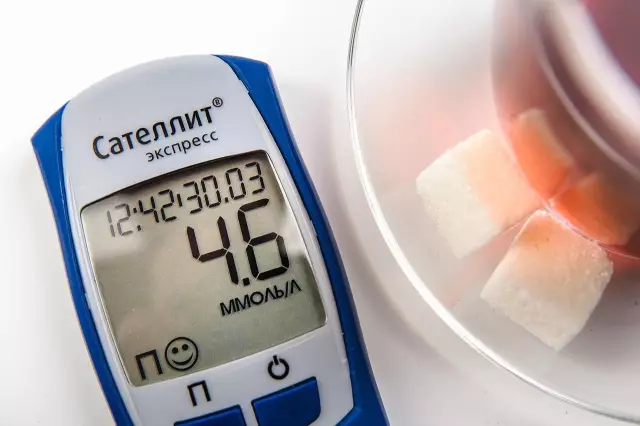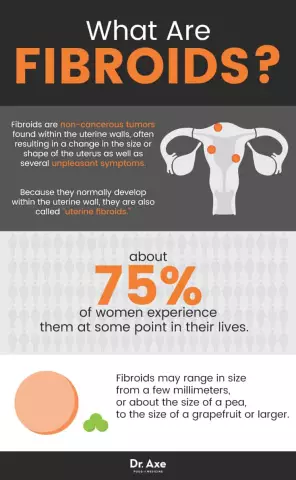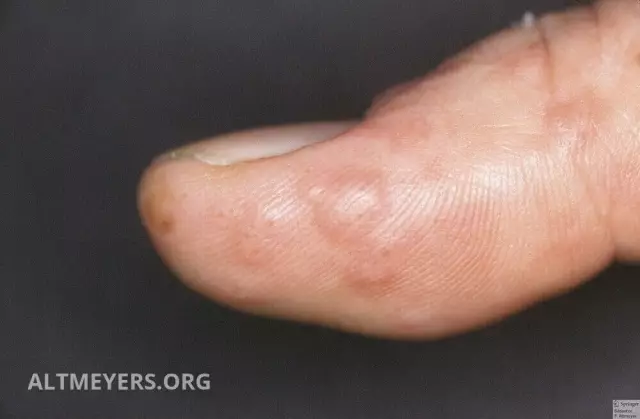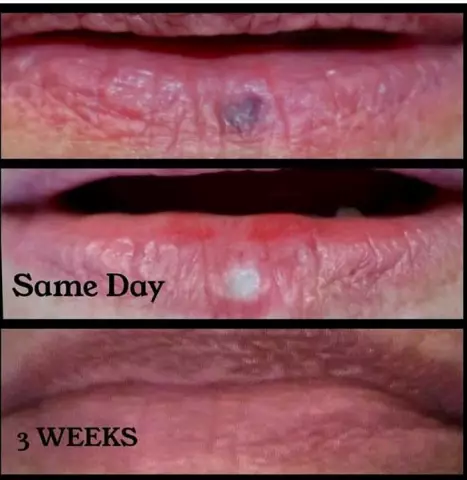- Author Rachel Wainwright [email protected].
- Public 2023-12-15 07:39.
- Last modified 2025-11-02 20:14.
Serosocele

Serosocele is the accumulation of serous fluid in cavities. Serosocele in the broadest sense of the word can be in any part of the abdominal or other cavity. Currently, the term serosocele is more often understood as a fluid benign formation in the pelvic area. The appearance of such a peritoneal cystic neoplasm may be associated with the postponed surgical treatment, acute inflammation of the uterine appendages, pelvilperitonitis, endometriosis. Serosocele has a round or oval shape. Its diameter usually ranges from 1 to 25 cm. The consistency and turgor of the neoplasm can be determined during diagnostic and therapeutic interventions. More often the consistency is tight-elastic. Serosocele can be multi-chambered or unicameral, that is, it can have one or more cavities. The walls of the formation are represented by adhesions. The serosocele cavity is filled with a yellowish opalescent fluid. The volume of liquid can reach 500-100 ml.
Serosocele symptoms
Serosocele is one of the difficultly diagnosed neoplasms of the small pelvis. Symptoms of serosocele are not very specific. According to complaints, it is almost impossible to distinguish serosocele, ovarian tumors and ovarian cysts. This formation can be almost asymptomatic, and can lead to the development of chronic pelvic pain syndrome. The patient may be bothered by pains in the back, lower back, lower abdomen, which bother every day, aggravated after hypothermia, physical work, stress. The phenomena of dysmenorrhea are often observed - painful menstruation, accompanied by a decrease in working capacity. There may also be pain during intercourse with deep insertion of the male penis into the vagina. The intensity of the pain can be so severe that many patients are forced to give up intimate relationships. Generally,constant painful sensations lead to depletion of the nervous system, decreased immunity, ability to work. In order to clarify the diagnosis, instrumental examination methods are prescribed. Ultrasound examination of the small pelvis with serosocele is quite informative. Characterized by the absence of a clear capsule, irregular contours of the cystic structure when visualized with ultrasound. With repeated ultrasound examination, there may be a significant change in the form of education, which is also a symptom of serosocele. If the diagnosis is difficult, sometimes it is necessary to carry out diagnostic intervention - laparoscopy, that is, examination of the pelvic cavity using special laparoscopic equipment introduced through punctures. Technical difficulties may be associated with the presence of an adhesions in the abdominal cavity.
Serosocele treatment

If there are no symptoms of serosocele, the patient is not bothered by pain in the pelvic area, then treatment is not required. In this case, regular observation by a gynecologist is necessary. Usually, an ultrasound examination of the pelvic organs is repeated once every six months. If there is a pronounced increase in serosocele volume or chronic pelvic pain syndrome, then surgery is likely to be required. The minimum surgical intervention is a puncture biopsy of serosocele. Under ultrasound control, the doctor inserts a needle into the cavity of the formation and removes the fluid contained there. Thus, the compression of the surrounding tissues is instantly reduced, which means that the pain syndrome disappears. Punctures should be repeated when fluid re-accumulates. The contents of the serosocele are examined in the laboratory. With the help of enzyme-linked immunosorbent assay and bacteriological cultures, both bacterial flora are determined with the determination of sensitivity to antibiotics, and viral, fungal infection, chronic urogenital infection and antibodies to mycobacterium tuberculosis. When the pathogen is identified, specific treatment is prescribed. Anti-inflammatory therapy is indicated for other women after puncture of serosocele. More extensive surgical interventions are possible if indicated, creating permanent drainage of the serosocele region or removing adhesions of the small pelvis. Conservative treatment of serosocele can be prescribed by a gynecologist as an alternative to the surgical method. The therapy is based on the use of anti-inflammatory, anti-adhesion drugs and physiotherapy. For the anti-inflammatory effect, non-steroidal anti-inflammatory drugs are prescribed in the form of injections, suppositories or tablets. For the conservative therapy of the adhesions in the small pelvis, enzyme agents are used - hyaluronidase and others. From physiotherapy, electrostimulation, magnetotherapy and phonophoresis are usually chosen.
Treatment of serosocele with folk remedies
Sometimes patients resort to alternative medicine methods. Treatment of serosocele with folk remedies is usually ineffective. It is possible to combine prescriptions of the attending physician and alternative therapies. So the treatment with a decoction of badan root for four weeks is widely used. The broth is prepared from 50-100 g of plant materials, infused, and then used for douching and inside. It is possible to use a tincture of marina root before meals by mouth three times a day for a month. Another medicinal plant for the treatment of serosocele is the herb morinda lemon. It can be used both as tinctures and as a powder inside. Treatment of serosocele with folk remedies also includes hirudotherapy, that is, the use of medicinal leeches. Hirudotherapy procedures are prescribed by repeated courses several times a year.
Serosocele and pregnancy
The combination of serosocele and pregnancy will require a particularly attentive obstetrician-gynecologist. Large serosocele can lead to compression of the pelvic organs, disrupt the blood supply to the ovaries, uterus, and tubes. Sometimes this formation can become the cause of infertility. In this case, surgical treatment is performed. If the pregnancy has already begun, then a large serosocele can cause severe pain and, sometimes, compression of the pregnant uterus, leading to complications during pregnancy. In this case, it is possible to conduct a puncture biopsy of the formation in order to reduce its volume. For the first time detected during pregnancy, serosocele can also be punctured for diagnostic purposes (including to exclude an infectious process in the small pelvis). Small serosoceles are not a contraindication to pregnancy and in vitro fertilization and embryo implantation.
The information is generalized and provided for informational purposes only. At the first sign of illness, see your doctor. Self-medication is hazardous to health!






